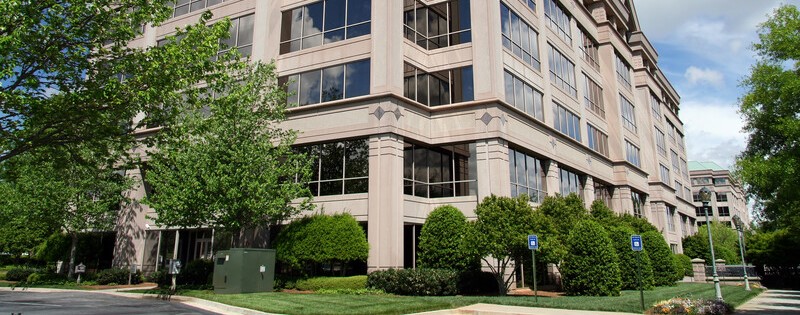The net lease market has witnessed an astounding transformation in the last two years. From May 2022 to May 2024, the total supply of net lease available assets has increased from $9.05 billion to $24.3 billion. That represents a 168% jump in inventory in only 24 months despite average cap rates rising 88 basis points during that same period.
Many participants in the net lease market are overlooking the major storm brewing on the horizon. Despite rising cap rates, inventory levels continue to swell, signaling that cap rates will almost certainly climb much higher to restore market equilibrium. Here, we explore the reasons behind this trend, analyze the underlying data and discuss implications for the future so you can stay ahead of the market.
The Cap Rate Pendulum Swings
Coming off historically hot market conditions in 2021, with cap rates at all-time lows, the market experienced a dramatic shift. Inflation and interest rates quickly skyrocketed, leading to a far higher cost of financing with an ensuing slowdown of buy-side activity. By late 2022, market transaction velocity was plummeting despite a steady influx of assets hitting the marketplace. Sellers have been holding onto “hope certificates” for the past 18 months, anticipating that cooling inflation and potential Federal Reserve interest rate cuts would lure investors back to buying at aggressive cap rates. However, none of that has come to pass, and the supply/demand imbalance has reached its breaking point.
The Current Marketplace in Four Tenants
Market transaction and cap rate data on four specific, highly traded retail net lease tenants provide an incredible snapshot of the broader marketplace dynamics. Chipotle, Starbucks, 7-Eleven and Walgreens are some of the most commonly traded net lease brands, and these tenants provide a fascinating illustration of how the landscape has radically shifted. Over the past two years, cap rates for these tenants have steadily increased, mirroring the overall market shift.
In 2022, the average cap rate for 7-Eleven was 4.51%. By 2023, it had risen to 5.38%. For Chipotle, the average cap rate increased from 4.26% in 2022 to 4.88% in 2023, reaching 5.08% in early 2024. Starbucks saw its cap rate go from 4.75% in 2022 to 5.29% in 2023, and it currently sits at 5.47% in 2024. Walgreens experienced the most dramatic rise, with cap rates moving from 5.60% in 2022 to 6.25% in 2023 and a significant jump to 7.19% in 2024.
These increases in cap rates have been accompanied by a sharp decline in the number of closed transactions. For instance, 7-Eleven saw 148 closed comps in 2022, dropping to 114 in 2023 and just 24 so far in 2024. Similar trends are evident across the other tenants, with Starbucks seeing a drop from 158 closed comps in 2022 to 124 in 2023 and 47 in 2024.
These market conditions and numbers tell a sobering story. Despite cap rates rising substantially over the past two years, on-market inventory has exploded, and transactions have collapsed. This implies that cap rates still have far to go to find market-clearing buyer demand. Let’s look forward and consider how this will play out in the coming months.
The Tipping Point: Motivated Sellers and Accelerating Cap Rates
Within the current on-market inventory, there are both motivated sellers and those with lower eagerness to sell. Motivated sellers, who must make deals due to factors such as loan maturities and financial pressures, make up a large percentage of the market. Therefore, the crux of the pressure within the market lies in the decisions these highly motivated sellers will make and to what extent they will loosen up their pricing. In turn, as the inventory of motivated sellers grows, we can anticipate a notable shift.
As time passes, the urgency for motivated sellers will intensify as loan maturities and financial pressures draw nearer. With a glut of inventory in the marketplace, these sellers will feel compelled to price their assets more aggressively, lowering prices and increasing cap rates to more quickly attract buyer engagement. These highly motivated sellers will have an outsized impact on the market comp data – particularly when transactions are at a relatively low point – setting lower ceiling benchmarks on valuations.
This shift is likely to have a snowball effect. As more sellers observe transactions closing at higher cap rates, fear of further increases will set in. This will drive a sense of urgency, prompting even more motivated sellers to enter the market and accept the new pricing reality. Highly motivated sellers, however, are not the only ones who may want to change their game plan. Conversely, fewer may choose to withdraw their assets from the market and hold onto them if cap rates rise too much. We believe that given the glut of supply of those tenants mentioned earlier, as well as many other household name net lease credit tenants, the result could be a rapid upward adjustment in cap rates, potentially climbing 50 to 75 basis points from current levels through 2024 and well into 2025.
The cycle will then repeat itself as more highly motivated sellers need to transact and “leapfrog” the cap rates from prior sales, until such time the new crop of buyers take notice of the attractive pricing levels in the net lease market and flood in. This process will continue until a happy medium is found where transaction volume consistency and cap rate fluctuation will stabilize in cohesion with one another.
Navigating the New Landscape
For brokers and investors alike, this evolving landscape presents challenges, but where there is a challenge, there is an opportunity. Understanding the motivations behind current inventory levels and anticipating the likely shifts in cap rates can inform strategic decision-making. Sellers who recognize the changing tide and adjust their expectations proactively may find themselves better positioned to navigate the market effectively ahead of time, rather than being forced to react more drastically as the pattern continues.
On the buyer side, the coming months may present unique opportunities. Higher cap rates can translate into more attractive yields, drawing in investors who have been on the sidelines. As the market finds its new equilibrium, savvy buyers will look to capitalize on the evolving conditions, securing desirable assets at favorable pricing.
The current logjam in the net lease marketplace is a complex phenomenon driven by rising cap rates and shifting economic conditions, and the breaking of this logjam will be marked by a period of rapid adjustment. Sellers, driven by necessity, will set new cap rate benchmarks, accelerating the market’s recalibration. While the near-term outlook suggests further upward pressure on cap rates, the market’s ability to adapt will ultimately determine the trajectory. By staying informed and responsive to these dynamics, stakeholders can navigate the challenges and uncover opportunities in this evolving landscape.
Source: GlobeSt.









 Treasury yields remained volatile during the first half of 2024, reacting to economic data that sent mixed signals about the outlook for inflation, Federal Reserve policy and long-term interest rates. The 10-Year Treasury yield started 2024 below 4 percent and peaked at 4.7 percent in late April.
Treasury yields remained volatile during the first half of 2024, reacting to economic data that sent mixed signals about the outlook for inflation, Federal Reserve policy and long-term interest rates. The 10-Year Treasury yield started 2024 below 4 percent and peaked at 4.7 percent in late April.
